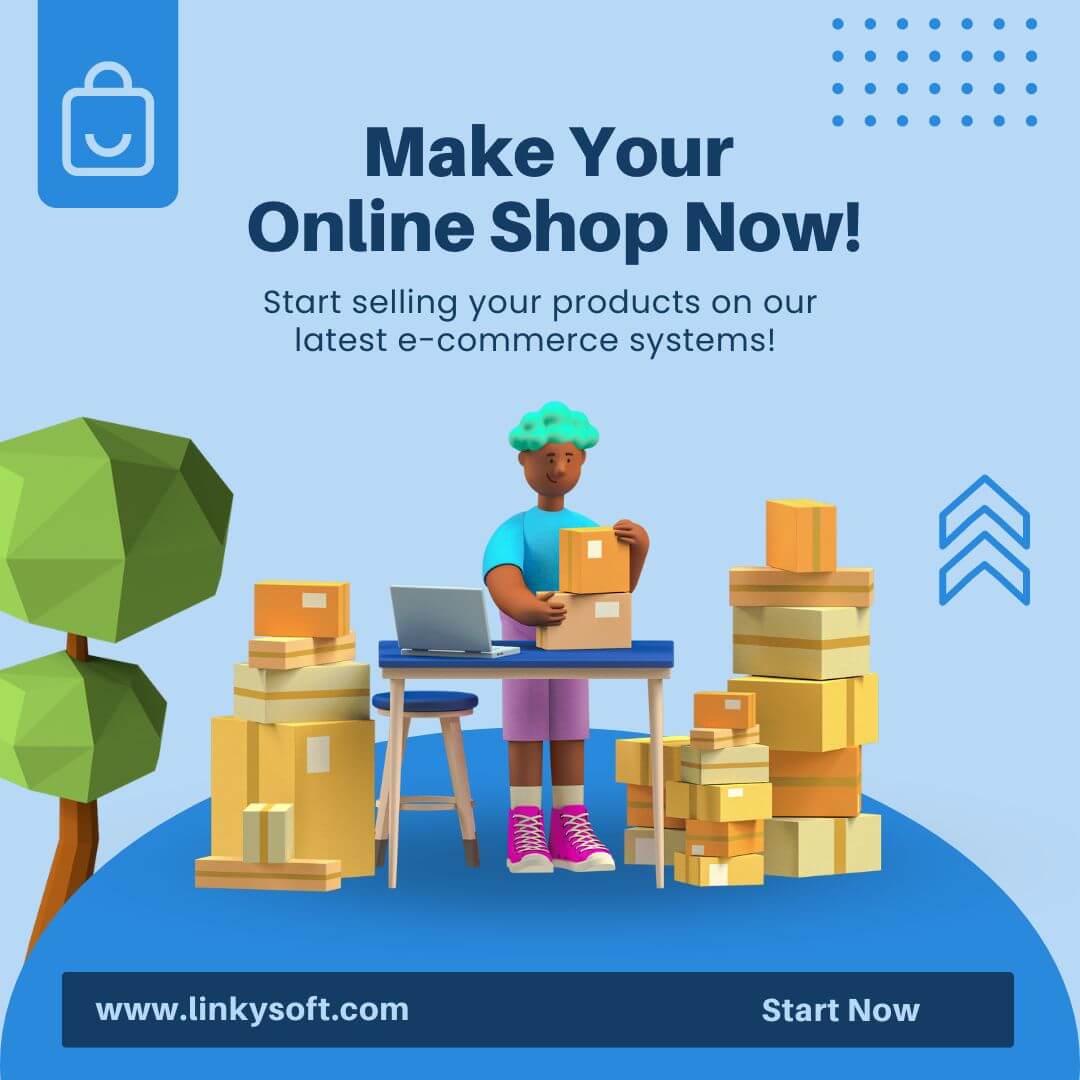In today’s competitive digital landscape, having a comprehensive business plan is not just beneficial—it’s essential. Developing your e-commerce store and increasing sales requires meticulous planning, from conducting thorough market research to selecting the right platform and developing effective marketing strategies. This article will guide you through the critical steps involved in creating a comprehensive business plan to drive the growth of your e-commerce store, covering everything from product selection to customer relationship management (CRM), shipping, and analytics.

1. Market Research and Analysis
Understanding Your Target Market
The first and most important step in developing a business plan for your e-commerce store is understanding your target market. This requires in-depth research into your audience's demographics, preferences, and pain points. By knowing exactly who you’re selling to, you can tailor your products, messaging, and services to meet their needs, ultimately increasing sales.
Creating Customer Personas
Creating detailed customer personas helps you segment your audience and market to each group effectively. A customer persona typically includes information about the customer's age, gender, occupation, purchasing behavior, and pain points. By personalizing your marketing strategy for each persona, you increase the chances of conversion.
Using Data for Market Segmentation
Tools like Google Trends and Statista can help identify popular products or services in your niche. By focusing on these segments, you can target the most lucrative parts of the market.
Competitor Analysis and Industry Trends
Understanding your competition is just as important as understanding your customers. Competitor analysis involves studying the strengths and weaknesses of businesses that offer similar products or services, allowing you to identify gaps in the market and refine your value proposition.
How to Conduct Competitor Analysis
Using tools like SimilarWeb or SEMrush, you can gather data on your competitors' traffic, customer demographics, and marketing strategies. This information helps you build a competitive edge.
Identifying Market Trends
Staying on top of industry trends is crucial for ensuring your business stays relevant. Platforms like Shopify and BigCommerce offer regular updates on emerging trends in e-commerce, such as the rise of mobile commerce and the growing importance of social media marketing.
2. Choosing the Right E-Commerce Platform
The Importance of Selecting the Right Platform
Your e-commerce platform serves as the backbone of your online store. The platform you choose will dictate your site's functionality, customization options, scalability, and the user experience you can offer. Choosing the wrong platform can limit your business growth, while the right one can set you up for long-term success.
Key Features to Look for in an E-Commerce Platform
When selecting a platform, look for essential features such as product management tools, secure payment gateway integrations, mobile responsiveness, and SEO-friendly features. The ability to scale as your business grows is also critical.
Linkysoft E-Commerce Solutions
Linkysoft offers a range of e-commerce management systems designed to meet different business needs. For example, Cartz is ideal for small to mid-sized businesses looking to streamline their operations. For more advanced needs, Togar and Togar Pro provide solutions for both single and multi-vendor marketplaces.
3. Building a Strong E-Commerce Website
Designing for User Experience
Once you’ve chosen the right platform, the next step is to create a website that offers an exceptional user experience (UX). A well-designed website is crucial for engaging visitors, reducing bounce rates, and driving conversions. Your website should be visually appealing, easy to navigate, and optimized for speed and performance.
Mobile Optimization
With mobile commerce rapidly growing, optimizing your site for mobile devices is essential. According to Statista, mobile sales are expected to account for nearly 54% of all e-commerce sales by 2023. Ensuring your site is mobile-friendly means using responsive design, fast loading times, and a simple, intuitive interface that works well on smaller screens.
Improving Site Speed
Page load times significantly affect user experience. Research shows that even a one-second delay can lead to a 7% drop in conversions (Kissmetrics). Tools like Google PageSpeed Insights can help you identify performance bottlenecks and improve site speed.
4. Product Selection and Inventory Management
Choosing the Right Products to Sell
Product selection is a critical component of your business plan. It’s important to choose products that not only align with your market research but also offer unique value to customers. Look for products that have high demand but low competition, or that solve a specific problem for your target audience.
Using Data to Choose Winning Products
Utilizing tools like JungleScout or Helium 10 can help you identify high-potential products by analyzing sales data, customer reviews, and market trends. This data-driven approach minimizes the risk of choosing products that won’t sell well.
Inventory Management Systems
Effective inventory management ensures that you have the right products available at the right time. Using advanced inventory systems like Togar Pro by Linkysoft can help you track stock levels, automate reorders, and avoid stockouts or overstocking. Automation is key to streamlining operations and reducing manual errors.
5. Digital Marketing Strategies for E-Commerce
Search Engine Optimization (SEO) for E-Commerce
SEO is one of the most effective long-term strategies for driving organic traffic to your e-commerce site. By optimizing your site for search engines, you can increase visibility, attract more visitors, and ultimately, drive more sales. Your goal is to rank high for relevant keywords, such as “comprehensive business plan to develop your e-commerce store and increase sales.”
On-Page SEO Techniques
On-page SEO involves optimizing individual pages on your site for search engines. This includes using your target keyword in strategic places like the title tag, meta description, headers, and throughout the body content. Additionally, optimizing product descriptions with keywords and ensuring your images have alt text can help improve rankings.
Off-Page SEO and Link Building
Off-page SEO primarily focuses on building high-quality backlinks to your site from other reputable sources. This increases your domain authority and signals to search engines that your site is trustworthy. You can build backlinks by guest blogging, collaborating with influencers, and getting featured in industry publications.
6. Paid Advertising and Social Media Marketing
Leveraging Pay-Per-Click (PPC) Advertising
While SEO is a long-term strategy, PPC advertising offers immediate results by placing your ads in front of a targeted audience. Platforms like Google Ads, Facebook Ads, and Instagram Ads allow you to create highly targeted campaigns that reach specific demographics. By utilizing advanced targeting options, you can ensure that your ads are seen by users who are most likely to convert.
Maximizing ROI from Paid Ads
To ensure you’re getting the best return on investment (ROI) from your paid advertising campaigns, it’s important to track key metrics such as click-through rate (CTR), cost per acquisition (CPA), and return on ad spend (ROAS). Tools like Google Ads and Facebook Ads Manager provide detailed analytics to help you optimize your campaigns.
Using Social Media to Build Brand Awareness
Social media platforms like Instagram, Facebook, and TikTok are powerful tools for building brand awareness and driving traffic to your e-commerce store. By consistently posting engaging content and interacting with your audience, you can build a loyal following and foster a community around your brand.
7. Customer Relationship Management (CRM)
The Importance of CRM for E-Commerce
A good CRM system helps you manage customer relationships by storing customer data, tracking interactions, and analyzing purchasing behavior. This allows you to offer personalized experiences that improve customer satisfaction and loyalty, ultimately leading to repeat business.
Choosing the Right CRM System
Linkysoft’s e-commerce solutions, such as Cartz, offer built-in CRM features that allow you to track customer interactions and offer personalized services. This helps you improve your retention rates and increase customer lifetime value (CLV).
Email Marketing and Automation
Email marketing is a key component of CRM and one of the most effective channels for customer retention. Automated emails, such as abandoned cart reminders and personalized product recommendations, can significantly boost your conversion rates. Tools like Mailchimp and Klaviyo provide powerful automation features that can help you nurture leads and retain customers.
8. Shipping and Fulfillment Strategies
Efficient Shipping and Fulfillment
Shipping is a critical component of the customer experience. Fast, reliable shipping builds trust with customers and encourages repeat purchases. Offering various shipping options, including standard, express, and international shipping, ensures that you can meet the needs of a diverse customer base.
Integrating with Third-Party Logistics (3PL) Providers
Partnering with third-party logistics (3PL) providers like ShipBob or FedEx can help you streamline your fulfillment process, ensuring that orders are processed and shipped quickly. This can reduce operational costs and improve delivery times.
Creating a Return Policy
A clear and customer-friendly return policy builds trust and encourages first-time buyers to make a purchase. According to a study by Invesp, 92% of consumers will buy again if the returns process is easy. Offering hassle-free returns can increase customer loyalty and boost overall sales.
9. Analytics and Continuous Improvement
Tracking E-Commerce Performance
To ensure your e-commerce store continues to grow, it’s essential to track key performance indicators (KPIs) like conversion rates, average order value (AOV), and customer acquisition cost (CAC). Using analytics tools like Google Analytics, you can gain insights into your store’s performance and identify areas for improvement.
Conducting A/B Testing
A/B testing allows you to experiment with different elements of your website, such as product page designs, checkout processes, or call-to-action buttons, to determine which version performs better. Continuous optimization based on A/B testing results can significantly improve your conversion rates over time.
Utilizing Heatmaps and User Behavior Analytics
Tools like Hotjar allow you to create heatmaps of your website, showing where users are clicking, scrolling, or dropping off. This data helps you optimize your site layout, making it more user-friendly and increasing the likelihood of conversions.
Conclusion
Developing a comprehensive business plan for your e-commerce store is a multifaceted process that requires careful consideration of various elements, from market research to website design, product selection, and customer relationship management. By following the steps outlined in this article and leveraging advanced e-commerce solutions like those provided by Linkysoft, you can create a scalable, profitable, and successful online store. Remember, continuous improvement through analytics and customer feedback is key to maintaining a competitive edge and ensuring long-term success in the fast-evolving world of e-commerce.








